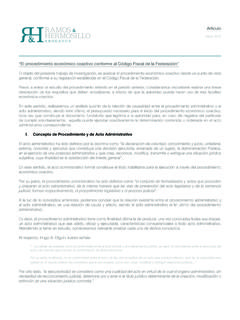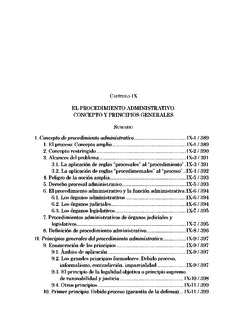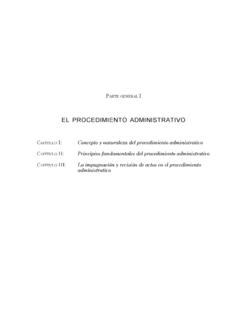Transcription of Test Procedure to Evaluate Fluids in Open Loop …
1 Test Procedure to Evaluate Fluids inOpen Loop Axial Piston PumpsTechnical Data V-PUPI-TS022-EPump ModelPVH57C-RF-2S-11-C25V-31 This test Procedure is to Evaluate Fluids for use inopen loop axial piston pumps. It consists of 250 hoursof actual test time (not including break-in or per-formance running).The operation temperature isdependent upon the capability of the test fluid asspecified by the fluid manufacturer or the ratedtemperature specified for the pump, whichever islower. Inlet fluid temperature must be maintained perfluid/pump rating throughout the complete pump to be used is a PVH57 with a pressurecompensatorand load sensing control, model of ContentsFluid Ratings.. 2 Installation .. 2 Pump Break-In .. 3 Pump Performance Check Procedure .. 3 Disassembly and Inspection.
2 4 Test fluid .. 6 Fifty-Hour Pressure Cutoff Test .. 6 Two Hundred-Hour Cyclic Test .. 6 Final fluid Testing .. 7 fluid Pass/Fail Criteria .. 7 Glossary .. 8 Appendix A - Efficiency Formulas.. 9 Appendix B - Control Pressure Hysteresis Test .. 10 Pump Performance Check Record .. 11 fluid Properties Record .. 13 Piston/Bore Record .. 14 2 EATON CORPORATION fluid PowerTest Procedure to Evaluate Fluids in Piston Pumps Technical Data V-PUPI-TS022-E March 2009 InstallationFluid RatingsFor standard anti-wearpetroleum base Fluids , thePVH57 pump has the followingratings: Rated Speed: 2400 rpm Rated Pressure: 250 bar (3625psig) Rated Temperature: 95 C(203 F) Inlet Pressure: AtmosphericPressure 1 bar absolute (0psig)For performance testing, thePVH57 is to be tested at theratings listed in Table pump into test circuit perFigure 1.
3 Fill the pump case withpre-filtered anti-wear petroleum-based hydraulic 1 PerformanceTesting RatingsRATED SPEEDRATED PRESSURE RATEDTEMPFLUIDMAX RPMMAX BAR (PSIG) MAX C ( F)Water Glycol1800170(2465)50(122)Invert Emulsion1500155(2247)50(122)90-10 HWBF1500155(2247)50(122)Polyolester18002 30(3335)65(149)Phosphate Ester1800230(3335)65(149)Environmentally FriendlyVegetable Base1800250(3625)65(149)EnvironmentallyF riendlySynthetic Base2400250(3625)95(203)Figure 1 Component #1 Vented reservoir (approx 102 gallons)2 Heater3 Strainer (optional)4 Thermometer5 2" gate valve6 Thermometer7 Inlet pressure transducer 100 psia8 PVH57C-RF-2S-1*-C25V-31 Pump9 Variable speed drive10 Cooler11 Flow meter12 Return filter - 3 micron absolute full model: filter #OFR60SM11, element#V4051B3C05 (use 10 m absolute for invertemulsion)13 Outlet pressure transducer 5000 psig14 Pilot operated relief valve15 Typicalmodel: DG4V-3S-22A-M-FW-B5-60 (02-109636)16 Typical model: DG4V-3S-2B-M-FW-B5-60 (02-109572)17 Remote relief valve18 Case pressure transducer 500 psig19 Flow meter20 Torque transducer21 Load sensing line transducer 5000 psig22 Variable orifice throttle valve (in parallel withrelief valve 14)Note.
4 Case line should be a separate line with theshortest route to the return side of the reservoirand return below the oil (preferably in DG Valve 15 Body) tolimit decay rate of to kbar/sec(100,000 to 150,000 psi/sec)3 EATON CORPORATION fluid PowerTest Procedure to Evaluate Fluids in Piston Pumps Technical Data V-PUPI-TS022-E March 2009 Pump Break-InPump PerformanceCheckTable 2 Pump Break-In ProcedureOUTLET PRESSDURATIONSPEEDBAR (PSIG)INLET OILTEMPSTEP MINRPM 20 5 ( ) C 5 ( F 9)1560050(725)Ambientincrease25120050(72 5)to3101200100(1450)4101200150(2175)5101 800150(2175)6101800200(2900)7102400220(3 190)95(203)Pump Break-InBreak in the pump using anti-wear petroleum base hydraulicfluid that complies with VickersOil Recommendation Data SheetM-2950-S. Run the break-inprocedure step-by-step as listedin Table 2.
5 Inlet is to be atatmospheric. No external leak-age is allowed during the Efficiency PercentageContinue running the pump atfull stroke displacement usingthe parameters in Table 2, Step7 to determine its outlet flow must bebetween 121 lpm (32 gpm) and140 lpm (37 gpm).If not, STOP THE TEST ANDCONTACT YOUR the output flow, inputtorque, and case flow. Computethe overall efficiency using theformulas in Appendix the overall efficiency is lessthan 85%, continue running thepump (20 hours maximum)usingthe parameters in Table 2,Step 7 and re-check overallefficiency using the formulas inAppendix the overall efficiency is not85% or greater, DISCONTINUETESTING AND NOTIFY YOUREATON Baseline TestContinue using petroleum-basedfluid, but at the conditions listedin Table 1 for the test fluid . Setthe compensator at ratedpressure; adjust speed andtemperature per the ratings forthe test the pump performancecheck of Operations1 Energize 15 while 16 is de-energized.
6 The pump is nowat full flow with pump outletpressure controlled by reliefvalve Vary pump outlet pressure byadjusting relief valve Check ProcedureThe pump performance checkmust be at 14 bar (203 psi)below the rated pressurespecified in Table the following parameterson the blank Pump PerformanceCheck Record (page 11). Input torque Output pressure Output flow Case flow Case temperature Case pressure Inlet temperature Inlet pressureUse the results to compute theoverall efficiency per the formu-las in Appendix 2 shows an example oftest data obtained from thepump performance : _____Technician: _____Test: _____Pump Serial No. _____Date: _____Pump Assembly: _____Pump Model: _____Pump Inlet fluid Temperature: _____Baseline Performance Check with Petroleum-Based FluidFluid: _____Pressure: _____ Speed (rpm): _____INPUTOUTPUTOUTPUTCASECASECASEINLETT ORQUEPRESSUREFLOWFLOWTEMPPRESSURETEMPEFF ICIENCY|||||||||||||||||||||Figure 2 Petro Oil Company19 January 1999 JoeTechnical690825 PerformancePVH57C-RF-2S-10-C25V-31SC0000 2120 FWestern AW Hydraulic Fluid17501365 2294 psig 25 gpm.
7 5 gpm 149 F7 psig120 F88%4 EATON CORPORATION fluid PowerTest Procedure to Evaluate Fluids in Piston Pumps Technical Data V-PUPI-TS022-E March 2009 Figure 3 Disassembly andInspectionDisassemble the pump perVickers Overhaul ManualM-2210-S, Figure 3. Identify thepistons and respective bores inthe cylinder barrel per Figure 4for re-assembly into the : In millimeters, measure cylinder barrelbores and piston OD to three decimal places(four decimal places if measuring in inches), anddimensions A and B to two decimal places(three decimal places if measuring in inches).Record information on a blank Piston/BoreRecord (pages 14 and 15).Figure 45 EATON CORPORATION fluid PowerTest Procedure to Evaluate Fluids in Piston Pumps Technical Data V-PUPI-TS022-E March 2009 Figure 6 Figure 5 Disassembly andInspection(continued)Inspect its components asfollows:1 Valve plate running-face inspect surface finish visuallyand take a photograph.
8 (Figure 5)2 Cylinder barrel running face inspect surface finish visually.(Figure 5)3 Swashplate (yoke) runningface inspect surface finishvisually. (Figure 5)4 Swashplate (yoke) bearingjournals inspect visually.(Figure 5)5 Cradle (saddle) bearings inspect visually. (Figure 5)6 Bias and control piston/rod inspect visually. (Figure 6)7 Hold-down arms and shoeface inspect Shaft and shaft bearings inspect visually. (Figure 6)9 Measure metering lands diameters and widths onboth control spools (compen-sator). (Figure 6)10 Measure shoe thickness (B),pocket depth (A), piston/shoe endplay (maximumallowable end play [ ]), piston diameter attop, middle, and bottom ofpiston and cylinder barrelbores at top, middle, andbottom. Record results onthe blank Piston/Bore Record(page14).11 Shoe cage inspect Shaft seal and mating shaftsurface inspect Photograph visually CORPORATION fluid PowerTest Procedure to Evaluate Fluids in Piston Pumps Technical Data V-PUPI-TS022-E March 2009 The type of fluid being testedwill determine pressure, speed,and temperature.
9 See Table for 50 to 55 hours at ratedpressure (pressure compensatorcut-off), rated speed, and the pump performancecheck and record the results onthe Pump Performance CheckRecord (page 11).After completion of the 50-hourcut-off test, inspect valve plateand photograph the criteria is material transfer,or cavitation and/or cavitation/erosion may be observed at theoutput metering groove area ofthe valve plate (Figure 5).Re-assemble the pump andrepeat the pump performancecheck. Record the results on thePump Performance CheckRecord (page 11).Fifty-Hour PressureCutoffTestTwo Hundred-HourCyclicTestRe-AssemblyRe-asse mble the pump perVickers Overhaul Manual M-2210-S while lubricating all partswith the fluid to be Pump Re-InstallationInstall the test pump back intothe test circuit per Figure 1 andfill the pump case with pre-filtered test NFPA R3 - 1998procedure when changing fromone hydraulic fluid to another inthe test stand, or consult thefluid supplier for any otherspecific fluid FillingMeasure the following on thetestfluid as received from thedrum.
10 Record the results on theTest fluid Record (page 13). Viscosity cSt @ 40 C Water content wt % ( only for non-watercontaining hydraulic Fluids ) Cleanliness level ISO Code Spectrographic analysis for atleast the following elements(ppm): P, Zn, Ca, K, Ba, B, Si,Fe, Cu, Pb, Sn Total Acid Number (TAN)mg/KOH (Report only forvegetable and syntheticenvironmentally acceptablehydraulic Fluids , and poly-olesterfire resistant hydraulicfluids.)After transferring the test fluidfrom the drum to the reservoirusing a filter cart to assure fluidcleanliness, report the following: Water content wt % Cleanliness level ISO Code(maintain 18/16/14 or cleaner.)Baseline Performance CheckThe type of fluid being testedwill determine pressure, speed,and temperature. See Table the pump performancecheck and record the results onthe Pump Performance CheckRecord (page 11).

















